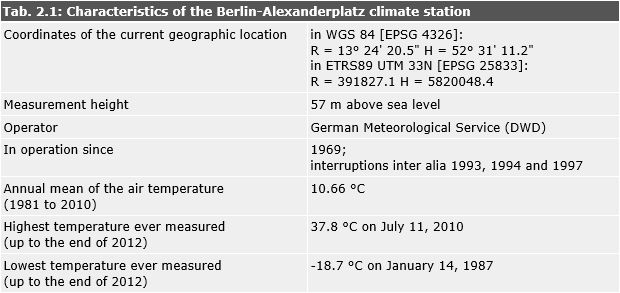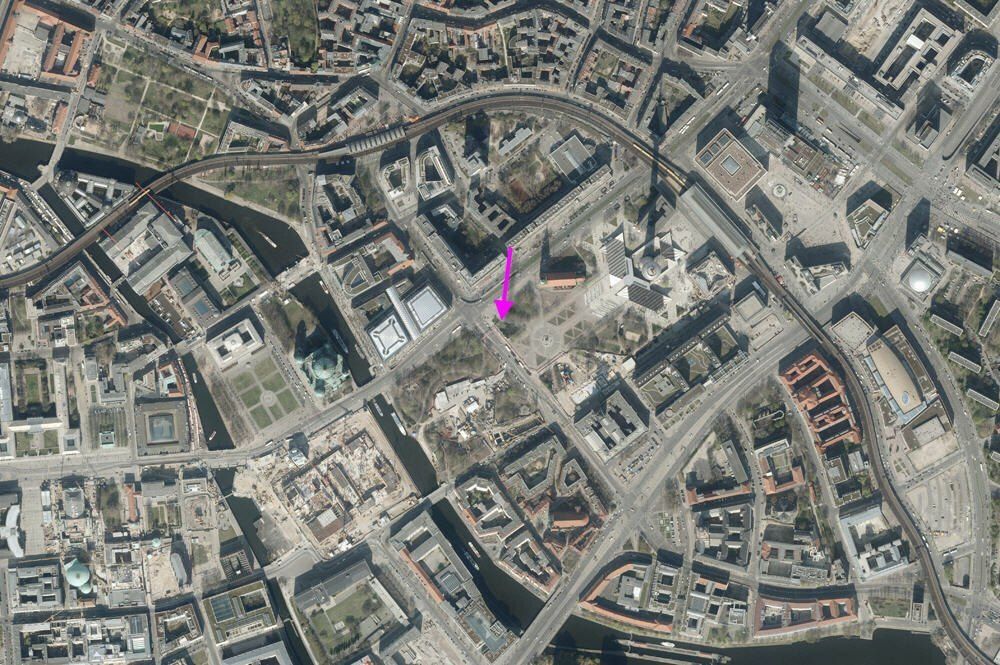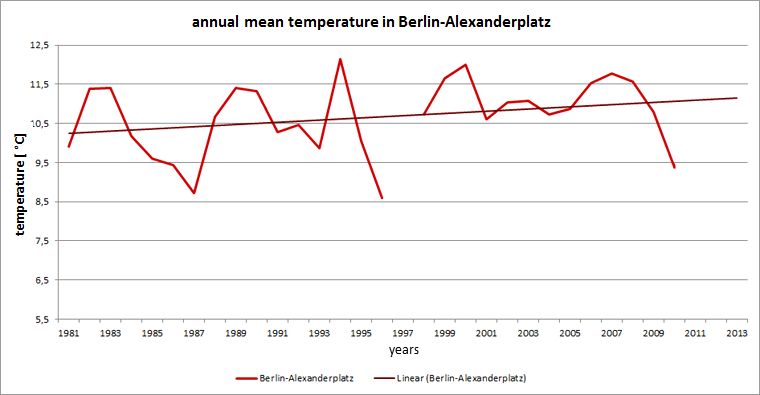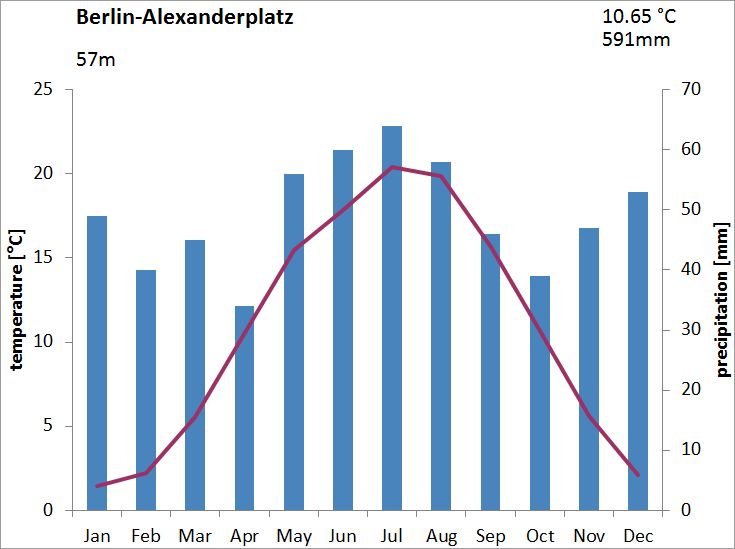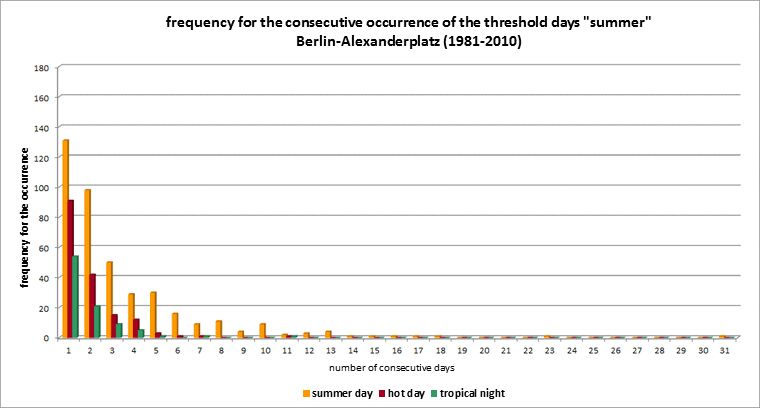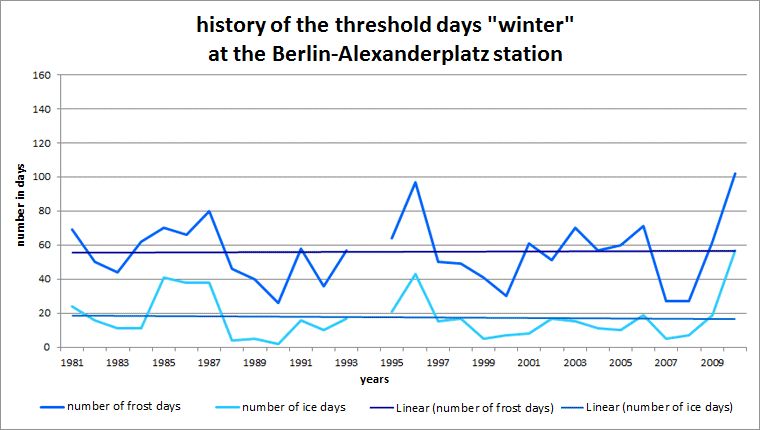The Berlin-Alexanderplatz station lies directly in the city centre of Berlin at the corner of Karl-Liebknecht-Straße and Spandauer Straße (cf. Photo 2.2). The river Spree flows about 350 m west of the current site of the station. The surroundings of the station are characterised by dense and partly high buildings and only very few, mostly smaller green spaces. Due to the inner-city structure at the measurement site, this station exhibits by far the highest nocturnal air temperatures among the Berlin stations and is treated nationwide as a representative inner-city climate station by the German Meteorological Service (DWD). Unfortunately, some measurements were missed in the past, some because of replannings at and near the old measurement site at the foot of the television tower (cf. Berliner Morgenpost on August 6, 2011). The fixed station has existed at the site described above near St. Mary’s Church and the Neptune Fountain since 2012.
The station values used for the investigation start on January 1, 1981, and exhibit some interruptions (mainly in the years 1993, 1994 and 1997) that partly affected the calculation of the annual values, in particular the annual mean values (see the original values within the Excel tables).
The temperature history of the Berlin-Alexanderplatz station is shown in Figure 2.1 for the years 1981 up to July 2011. The gap caused by the missed measurements in the 1990s is clearly visible. As mentioned, the measurement series is regarded nationwide as representative of an inner-city temperature history. With an average value of 10.66 °C, it shows by far the highest value of the six stations being compared here. The annual average value was 9.90 °C at the start of the temperature records being evaluated, in 1981, and increased to 11.04 °C in 2012.
Developments, trends

